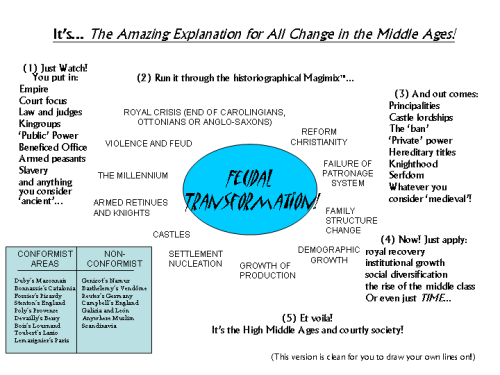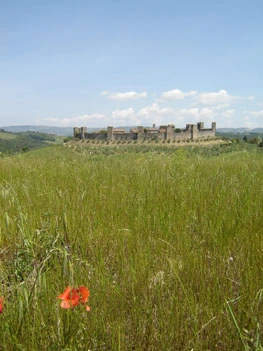I suppose the time comes in most early medievalist’s lives, periodically, when they find that they must deal with the ghost of Patrick Wormald. For me this presents comparatively little threat: I’m not an Anglo-Saxonist, I just play one in class, and though his work ranged across most of the West at times, I mostly escape any areas where I’d actually have to argue with him.1 All the same, the piece of work I most recently finished at the time I wrote this began in part as an answer to a question he asked on one of the two occasions I was lucky enough to meet him, and though there’s no knowing how he or the fields he worked in would now be if he were still alive, I’d still quite like to have told him what my answer had turned out to be.2 More immediately, though, to my great shame—any erstwhile students of mine please skip on to the next paragraph—despite knowing more or less what it argued from people’s references to it, I actually only just read (in September 2012, when I first drafted this) his 1977 piece, “Lex scripta and verbum regis“, and it prompted me to share a couple of characteristic bits.3
The first of these is the reminder that Patrick’s scholarship was full of edges, some of which could be quite blunt. Some of us might agree with the following, for example, but perhaps no-one else would have gone to this rhetorical effort to express it:4
“… it is not easy to account for the existence of much barbarian legislation in its extant form, simply in terms of the needs of justice and government. Some of the difficulties were implicitly acknowledged by Boretius, the editor of the Frankish capitularies for the Monumenta:
‘I take it for granted that, even if the understanding of particular details in the outward expression of the public life of the time escapes us completely, we are better able to recognize and distinguish the essentials of the matter, the underlying forces, than contemporaries. In fact, I am convinced that today we are better able to understand the legal sources of the Frankish period, to appreciate their meaning and implications, than the scribes and compilers of the period.’5
“In other words, we know what the Frankish legislators were trying to do and why, even if the texts themselves do not entirely support our views. Boretius was far from the most distinguished member of the Rechtsschule6[,] but a convoy is exposed by the speed of its slowest member….”
“5 Quoted by Stein 1926, pp. 291-2. The judicious Plummer was less confident: ‘The study of the Anglo-Saxon laws often reduces me to a state of mental chaos. I may know, as a rule, the meaning of individual words; I can construe, though not invariably, the separate sentences. But what it all comes to is often a total mystery’; Plummer 1902, p. 102.
“6 For criticism of his edition, cf. Ganshof 1957, pp. 40-1; and of similar assumptions by his colleagues, Goebel 1937, pp. 1-61.”
I mean, in terms of edge, that’s a seax, sharp side first then a surgically-placed blow with the bone-breaking back of the blade, done with great style but not what one of the scholars in Wormald’s footnotes here would call “comradely”. (I also note that to sustain the metaphor to full extent makes the weapon of choice, in fact, a torpedo, and Patrick therefore a submarine.) This doesn’t prevent the chapter going on to be incredibly interesting, of course, even if one of the strange things about it in retrospect is how readily he attributed incompetence to modern scholars because they had not attributed competence to the authors of the sources…

The scholarship of Patrick Wormald as represented by one of the busiest submarines ever fielded by the Royal Navy, the Second World War HMS Sealion, image from Wikimedia Commons
But what drove me to put fingers to keyboard this time was a passing reference later on, in discussion of the Lombard laws, to the fact that some of the manuscripts have portraits of the kings in. I did not know this, and anyone who has ever tried Googling for images of things Lombard will know that there is suprisingly little out there one can use, but the edition he cited for details of this is the earliest series of laws in the Monumenta Germaniae Historica and this of course means that it is now online!5 Now, of course, this is not the same thing as copyright-free, though I guess Wikimedia Commons would make an argument, and in any case it turns out that the only one of these images actually replicated in the edition is from the Codex Cavensis which the then-editor dated to 1005, so it’s not what you could call contemporary. Nonetheless, it’s still cool, so I put a small version below and invite you to go and look at the real site linked through. Lombard law-giving, as seen during one of Italy’s sporadic attempts to have its own king maybe!6 Worth a squint.

Drawing by L. Bethmann of a portrait of a Lombard king issuing law in the Codex Cavensis, c. 1005; click through for a link to the full-size original drawing in context at the dMGH
1. I have dithered a lot about whether to use the first name of a man I met all of twice and who probably wouldn’t have recognised me subsequently; I really didn’t know him that well. But ‘Mr Wormald’ just sounds awkward and dismissive, and seems to deny the force of personality that those who knew him still remember: witness the first few papers of Stephen Baxter, Catherine E. Karkov, Janet L. Nelson & David Pelteret (edd.), Early Medieval Studies in Memory of Patrick Wormald (Farnham 2009), especially Stuart Airlie, “Patrick Wormald the Teacher”, pp. 29-35, and of course, Jenny Wormald, “Living with Patrick”, pp. 37-43. So, Patrick, and I hope he wouldn’t have minded. Should you need a short guide to his scholarship, there’s also there Sarah Foot, “Patrick Wormald as Historian”, pp. 11-27. As for ranging across the West, I had also lately read, at the time I first wrote this, a clutch of essays responding to Chris Wickham’s The Framing of the Early Middle Ages: Europe and the Mediterranean 400-800 (Oxford 2005) in Journal of Agrarian Change Vol. 9 (Oxford 2009): almost all of them cite C. P. Wormald, “The Decline of the Western Empire and the Survival of its Aristocracy”, Journal of Roman Studies Vol. 66 (London 1976), pp. 217-226, which must be almost his first paper and is also, technically, a review. That’s not bad for long-lasting influence, is it?
2. He asked, “What formulary are the scribes in your area using?” and the answer became, more or less, J. Jarrett, “Comparing the Earliest Documentary Culture in Carolingian Catalonia” in Jarrett & Allan Scott McKinley (edd.), Problems and Possibilities of Early Medieval Charters, International Medieval Research 19 (Turnhout 2013), pp. 89-126.
3. P. Wormald, “Lex Scripta and Verbum Regis: legislation and Germanic kingship, from Euric to Cnut” in Peter Sawyer & Ian N. Wood (edd.), Early Medieval Kingship (Leeds 1977), pp. 105-138.
4. Ibid. pp. 105-106. His refs to: S. Stein, “Lex und Capitula: eine kritische Studie” in Mitteilungen des Instituts Österreichs für Geschichtsforschung Vol. 41 (Wien 1926), pp. 289-301; Charles Plummer, Life and Times of Alfred the Great (Oxford 1902); and François-Louis Ganshof, “Recherches sur les capitulaires” in Revue historique du droit français et étranger Vol. 4 (Paris 1957), pp. 33-87 & 196-246. Goebel 1937 is not in the volume’s bibliography, but is presumably Julius Goebel, Felony and Misdemeanor: a study in the history of English criminal procedure Vol. I (New York 1937, repr. Philadelphia 1976).
5. F. Bluhme (ed.), Leges Langobardorum, Monumenta Germaniae Historica (Leges in folio) IV (Hannover 1868), pp. xxx-xxxiv, plate inter pp. xxxii & xxxiii.
6. In 1002, on the death of Emperor Otto III, Arduin Marquis of Ivrea had been raised to the kingship of Italy, in eventual opposition to Otto’s successor in Germany, King Henry II (1002-1024). Henry eventually came and drove Arduin back to his home territories, getting himself crowned King of Italy in 1004, and Holy Roman Emperor in 1014, after which Arduin finally gave up and retired to a monastery. (On all this see Guiseppe Sergi, “The Kingdom of Italy” in Timothy Reuter (ed.), The New Cambridge Medieval History III: c. 900-1024 (Cambridge 1999), pp. 346-371, DOI: 10.1017/CHOL9780521364478.015, at pp. 364-368.) 1005 is therefore an interesting time for someone to be copying up the ancient laws of the Lombard kingdom. There is presumably recent work on the Codex Cavensis that either refines the date or makes this point, for example a quick search throws out Francesco Senatore, “La storiografia cavense dall’Ottocento ad oggi. Storia del Codex Diplomaticus Cavensis” in Rassegna storica salernitana, New Series Vol. 18 (Salerno 1992) pp. 131-160, but until such time as I have a need to read that I’ll leave this poorly-founded speculation lying around.




